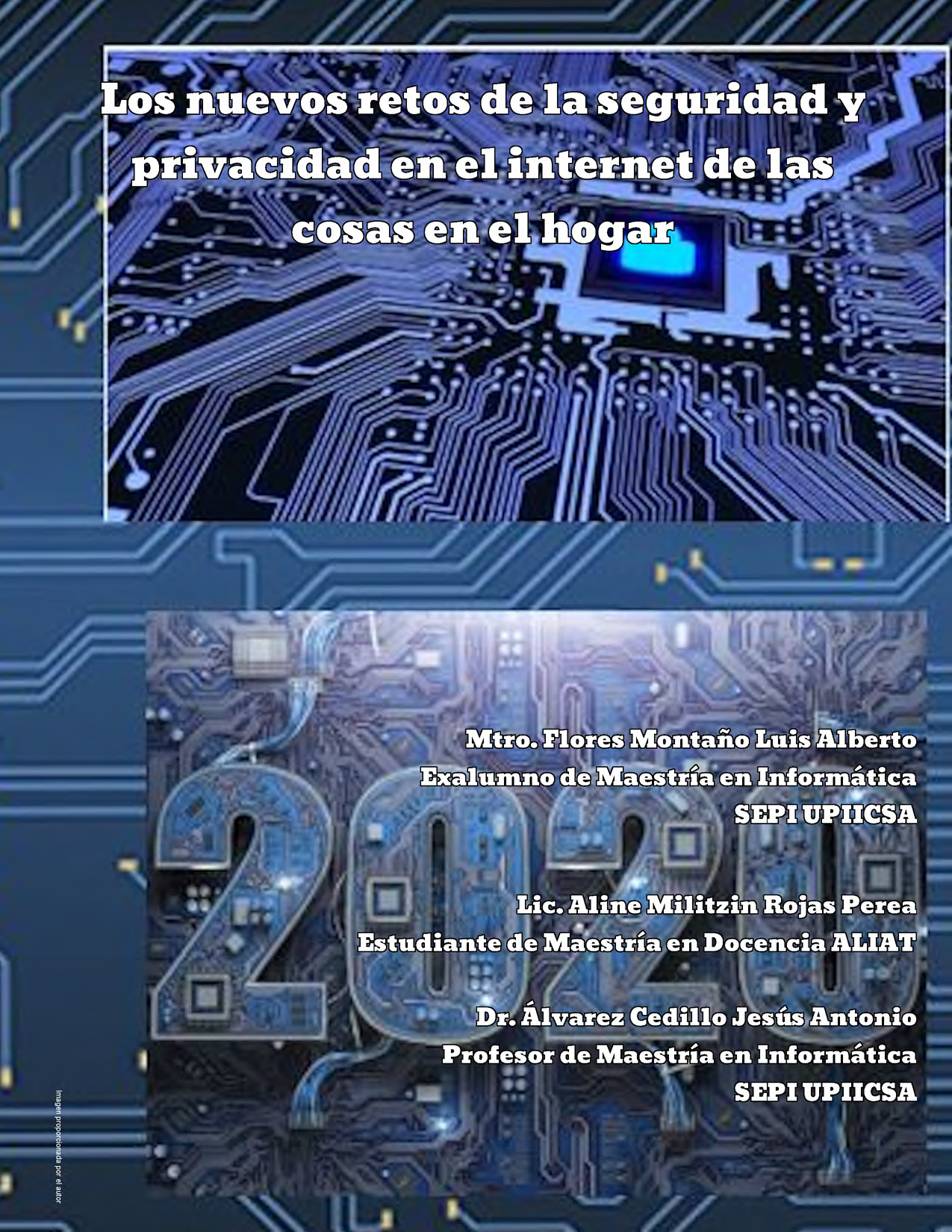The new challenges of security and privacy in the internet of things at home
Abstract
The Internet of Things is considered one of the most innovative technologies; however, due to its low processing computing architecture, it is considered a problem for the implementation of security protocols; Therefore, it has generated various proposals for solutions in diverse applications that use these devices. Security measures implemented in applications for domestic use differ from those for commercial operations, considering financial and human resources available to implement security and privacy.
The problem in the security of the internet of things in smart homes is often due to human error; On the other hand, technical errors in this technology also influence considerably. Therefore, this article examines existing solutions to improve the security of the devices, as well as the identification of essential requirements for device security in a Smart Home.
To achieve these objectives, a gateway architecture suitable for devices with low processing power is selected; Additionally, appropriate support technologies for automatic system administration are identified. Two main technologies are duly identified, the first for compatibility with the automatic configuration of the system, and the second for the automatic update of the firmware and software of the devices that are part of the system, which is essential for proper and safe operation.
Downloads
References
Brandt, A., Hui, J., Kelsey, R., Levis, P., Pister, K., Struik, R., Vasseur, J.P., Alexander, Protocolo de enrutamiento IPv6 para redes de baja potencia y pérdida de energía; Internet Engineering Task Force; California, Estados Unidos, 2010.
Raza, S., Duquennoy, S., Chung, T., Yazar, D., Voigt, T., Roedig, U., Asegurando la comunicación en 6lowpan con Ipsec comprimido ". En actas de la Conferencia Internacional de 2011 sobre Inform_atica Distribuida en Sistemas de Sensores y Talleres, Barcelona, España, 2011.
Shelby, Z., Hartke, K., Bormann, C., El protocolo de aplicación restringido (Coap), Internet Engineering Task Force: Fremont, CA, USA, 2014.
Thubert, P., Formato de compresi_on para redes basadas en datagramas Ipv6, Internet Engineering Task Force, California, Estados Unidos, 2011.
Yu, L., Lu, Y., Zhu X, “Tecnologías civiles disruptivas, Seis Tecnologías con Potencial de Impacto en los intereses de Estados Unidos hasta el 2025", Consejo Nacional de Inteligencia-NIC", Washington D.C, Estados Unidos, 2008






